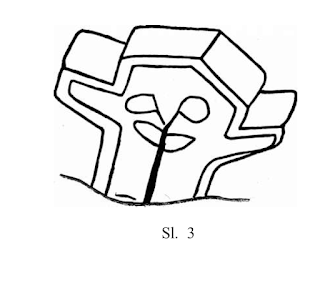This is one of these "Greek graveyards" from Hrta, Serbia.
Neither Greeks nor Hungarians ever lived in Central Serbia. The border between Hungarian and Greek graveyards goes along the line of the old border between Hungarian occupied Northern Serbia and Turkish occupied Southern Serbia during the Turkish Austrian wars 1718—1739.
His is history map of South Eastern Europe 1648-1739, Wars of Turkey with the Austro Hungarian Empire, Venice and Poland
- The Austro-Turkish frontier fixed by the Peace of Carlowitz 1699 (yellow)
- The Ottoman Empire as in 1739 (green)
- The Austro-Turkish frontier fixed by the Peace of Passarowitz 1718 (red)
The so called Hungarian graveyards are located above the red line.
This is Jovan Hadži-Vasiljević, a Serbian historian and ethnographer.
He excavated one of the "Hungarian graveyards" located in the village of Stave in western Serbia. He found that all the graves contained dead buried according to Orthodox Christian custom. One of the graves contained Austrian coin from 1650
What is incredible is that he did his excavation in 1914 right after Kolubara battle, one of the biggest battle which Serbian army fought, and won, against invading Austrian army at the beginning of the WWI.
He fought in the battle, then during the lull after the battle asked his commander to give him couple of soldiers and let him excavate the graveyard in the nearby village...
Basically he excavated on a battlefield. What a guy 🙂
The description of his excavation can be found (in Serbian) in 1931 "Journal of the Ethnographic museum in Belgrade, book 6".
Milenko Filipovic in his work "Ancient graveyards from Takovo region" (Central Serbia) talks in detail about Hungarian graveyards from this area still standing in 1950's.
This is one of the old tombstones from a "Hungarian graveyard" from his book
Milenko Filipovic tried to explain the reason why these old graveyards are called "Hungarian". His conclusion is that these were old graveyards built by Serbs who escaped across Danube and Sava with Austro-Hungarian army after they pulled out of Serbia at the end of the 18th c.
The whole clans moved away. Locals in the 1950's still knew for some cemeteries who built them and said that some "Hungarians" used to come back for years to visit their dead...






No comments:
Post a Comment